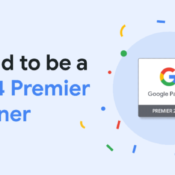/
/
Mudd Insights | Traditional vs. Nontraditional – What’s the difference?
In the advertising world, you hear these words all the time. Why?
Traditional is used to define mediums that we are use to. TV, Radio and print – the ones we grew up with. Traditional is what both our children and our grandparents use freely and feel comfortable with.
We know with traditional, you have limitations. You have a set amount of time or space to get your message across and you are filled in pods or pages with everybody else. Period. Oh, and you will be given a price tag. For some of them you have to take a class to read their rate cards. You run the ads and cross your fingers. You hope the rating system created 60 years ago still works today.
Nontraditional is the blanket term that covers all the mediums we’ve evolved into within the last 10 years. Internet, social media, web banners, guerilla tactics – the “new” reach. It’s not what you are used to and it’s exciting because the parameters aren’t set yet. You hear about the latest, greatest ad experiment that hardly cost anything and got over a million clicks. And you know you had a million clicks because everything is tracked – accurately. You can tell what time it happened and where it happened. The most clever and creative idea wins. If you come up with it, it could even be free.
Imagine what all the gold miners were thinking 150 years ago when they heard there was undiscovered land that could be hiding wealth beyond your dreams and all you have to do is get there first.
Isn’t New Media Really Just Media?
Today, my grandma has her own Facebook and my 6-year-old downloads cheat videos to improve his Mario Bros score on Wii. When will everything just be called media again?
What happens when someone gets a million clicks? They talk about it on the Today Show. Jay Leno might invite them on. Fox News might bring it up. Thanks to that mention, it now has two million clicks. Now what? You doubled your clicks on a nontraditional campaign by gaining exposure on a traditional platform.
Are we looking for a way to differentiate old with new? Are we just waiting until some company masters how to control it all and set a rate card to it before we can make it the norm? Or should we just admit that some of the old places still work, and work well combined with some of the new? By labeling and grouping them by traditional and nontraditional, are we simply thinking of the medium before we are creating the message?
Until the Superbowl is watched exclusively online, I don’t think the old is going away. If it were, they wouldn’t be rolling out bigger, flatter, sharper TVs every six months. Computers get smaller, TVs get bigger. So what’s next? Hopefully merge them together of course. So why don’t we? Why don’t we just merge the mediums in which we pace our strategy?
Mudd’s Solution: Hypercasting
At Mudd, we asked that question over 3 years ago. Back when flat screens were just a mere 720 dpi and a whopping 50 pounds. Yeah. That was a while ago. We experimented, brainstormed and developed Hypercasting. It’s only one word, but if you’ve been in my world for more than ten minutes, you realize it encapsulates volumes of what can be done.
We asked the question – what if you blended what works with traditional and what works with non-traditional and made them work together? What if you weren’t confined to a square ad and an online banner? What if we also challenged traditional media vendors to allow us more opportunities with their platforms? Do we really have to stick with 30-second commercials on the evening news? NO. We decided to ask for more and offer ideas on how to use traditional more creatively and for less money so we can use that place to drive our audience to the Hypercast site that allows us to talk, sing, somersault – whatever we want to get them to react. We’ve created our own platform for success. It’s customized for each viewer.
And it works, which is the most thrilling part. We create the right message at the right time to the right people and we use the media to tell them where to go to find it all. And they come. And then we can tell you exactly how they came and what drove them the best. We’ve also found that no matter who we help use our patented platform, it works! The formula can be applied to any industry.
We’ve helped hugely in automotive, academics, athletics, retail, self-promotion – even in politics. Maybe a new term is in order…
Recent Posts
Mudd Advertising
Let’s leverage!
Mudd Advertising
Politics Schmolitics!
Mudd Advertising
Mudd has been promoted to Google Premier Partner
All Categories
Tags
anonymous website visitor identification
automotive
branding
cable
case study
chevrolet
chevy
data
digital marketing
direct marketing
display
dynamic inventory display
facebook
first party
google
google analytics
google premier partner
internet marketing
local seo
Matthew Moody
media
mobile search
mobile seo
MUDDid
online marketing
online video
organic
organic search
pay per click
political
ppc
promotion
retargeting
search engine marketing
search engine optimization
sem
seo
social advertising
social media
social media marketing
strategy
traditional marketing
traditional media
Volunteer Spotlight
youtube




